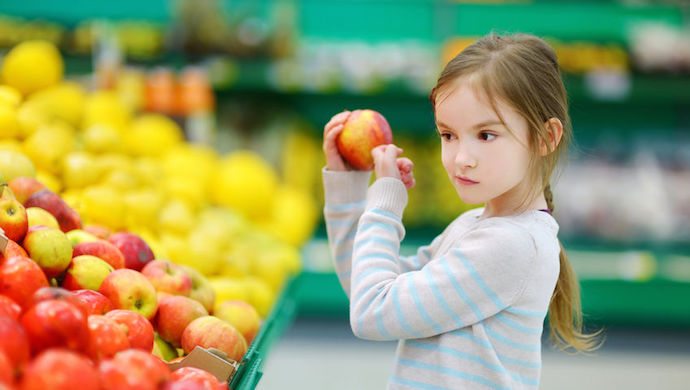Myths about the popularity, profitability, and potential of grocery e-commerce have been holding back the growth of the whole industry
Food and beverage, being the largest retail category in the US with annual sales worth US$600 billion, still accounts for 1 per cent of total e-commerce sales.
But as consumers get used to the convenience of ordering online, online grocery ordering may benefit from it, too. Only 15 per cent of US adults have purchased general food items online, and 25 per cent of the total online population has bought specialty food and beverages online that are difficult to find elsewhere.
Shopping habits are changing with time, and niche online grocery services that compete on convenience and selection are gaining traction, as well. In fact, according to a recent report, the entire grocery industry is anticipated to boom in the next five years, at a forecasted growth of 21.3 per cent by 2018.
This rise will take its value from GBP169.7 billion to GBP205.9 billion (US$206.67 billion to US$250 billion) and will transform it into one of the most important growth drivers in the online e-commerce sector. Seeing this monumental change, many entrepreneurs have started establishing their own grocery e-commerce solutions.
Being the enablers of e-commerce, we see this segment full of potential for aspiring entrepreneurs. But, there are certain myths that lead to entrepreneurs stepping back from starting an online grocery ordering website.
Also Read: Done deal: Alibaba-backed Lazada acquires online grocer RedMart
Let’s discuss each myth and look the reality behind each one:
Myth 1: Online grocery shopping has no future
E-commerce accounts for a small percent of all grocery sales, but that is entirely due to “lack of availability”. However, this is changing and experts forecast that online grocers will see an 8 to 10 per cent rise in sales.
According to Business Insider, the sales of online grocery are projected to grow at a compound annual growth rate (CAGR) of 21.1 per cent from 2013 to 2018 and will reach US$18 billion by 2018.
As per Nielsen, many internet users are already ordering groceries online, and more than half of them are happy. The data also showed that the number of people ordering groceries online has increased by 300 per cent in the the recent years.
Myth 2: People choose ‘pick up’ than home delivery’ to avoid extra charges
According to several surveys and reports, 75 per cent of US customers choose ‘pick-up’ over ‘delivery’. However, in a commuting society, waiting for an online order appears to be an unproductive habit. Due to strategically located grocers, people find it time-saving to just go and pick their groceries after ordering them online. Doing so, people not only save time but also save additional charges, which are pointless, if deliveries are delayed.
Also Read: So what, exactly, are the differences between grocery startups?
Myth 3: Selling groceries online will hamper offline sales
Most brick and mortar stores evolved over time and moved online. This is true in the case of major brands such as Nike, Wallmart, etc. In fact, when consumers have multiple options, they tend to buy more from an online store with better customer service.Given this evolution, to innovate is a must for brick and mortar shops running grocery businesses.
In the online grocery segment, people who adopt multi-channel shopping spend 20 per cent more with their primary grocer. Also, moving online can enable you to reach a wider audience, which can bring a boost in sales.
Myth 4: People avoid ordering perishable food
As per statistics, 30 per cent of orders include fresh items, 93 per cent include dairy products and 50 per cent of online shopping orders include meat and seafood. In the US alone, many households get their weekly groceries through grocers that offer subscription boxes. The idea that people want to touch fruits and vegetables prior to purchase still prevails, but the notion is slowly fading away.
Myth 5: Grocers should limit their inventory
According to research by Morgan Stanley, a growth of 34 per cent was forecasted for grocers who are selling fresh food, and the statistics will only get better as we enter 2017.
Experts believe that the e-commerce ecosystem is showing potential for vertical e-commerce players. This does not mean that horizontal e-commerce players will run out of business.
Also Read: These 3 points will determine the future of grocery e-commerce in Southeast Asia
Grocers who believe that they should stick to fewer options in online selling have equal potential to grow as grocers who sell a wide variety of products on their online store.
Conclusion
Myths about the popularity, profitability, and potential of grocery e-commerce have been holding back the growth of the whole industry.
But times are changing as the online grocery industry is seen to be rebounding back from the doldrums. By partnering with an experienced e-commerce service providers, grocers can quickly deploy an online solution that will help them build new business and boost relationships with existing customers.
—-
The views expressed here are of the author’s, and e27 may not necessarily subscribe to them. e27 invites members from Asia’s tech industry and startup community to share their honest opinions and expert knowledge with our readers. If you are interested in sharing your point of view, submit your post here.
Featured Image Copyright: maximkabb / 123RF Stock Photo
The post Let’s dispel the 5 myths about online grocery shopping appeared first on e27.
